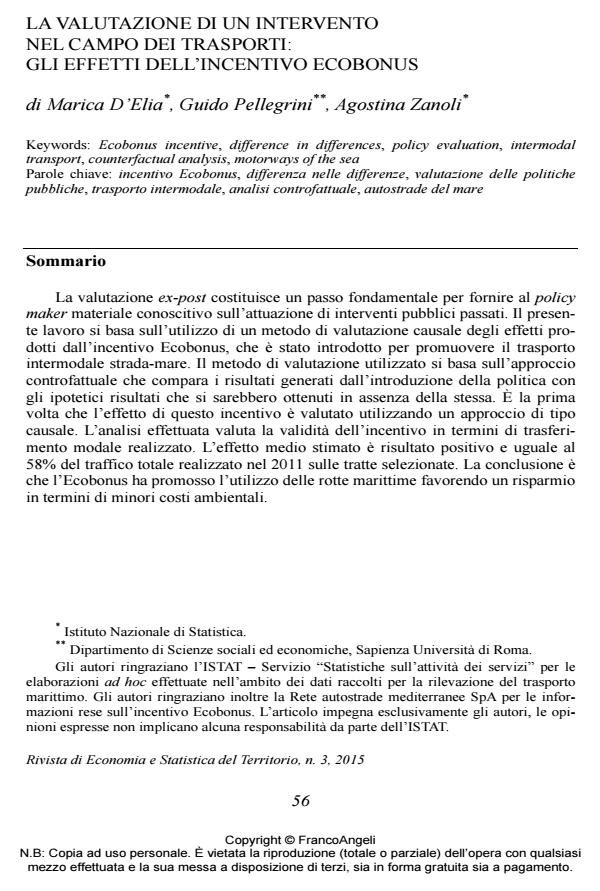The effects of the Ecobonus incentive in the transport sector: an evaluation
Journal title RIVISTA DI ECONOMIA E STATISTICA DEL TERRITORIO
Author/s Marica D'Elia, Guido Pellegrini, Agostina Zanoli
Publishing Year 2015 Issue 2015/3
Language Italian Pages 21 P. 56-76 File size 127 KB
DOI 10.3280/REST2015-003003
DOI is like a bar code for intellectual property: to have more infomation
click here
Below, you can see the article first page
If you want to buy this article in PDF format, you can do it, following the instructions to buy download credits

FrancoAngeli is member of Publishers International Linking Association, Inc (PILA), a not-for-profit association which run the CrossRef service enabling links to and from online scholarly content.
Objectives. The ex-post evaluation is a fundamental step to provide the policy makers with useful information about the implementation of past program. The present study focuses on the use of a method of evaluating causal effects produced by the Ecobonus incentive. It was granted to promote intermodal transport between road and sea.
Methods and Resultats
The evaluation method used is based on a counterfactual approach that compares the results generated with the introduction of the incentive scheme with the hypothetical results that would be obtained in the absence of it. It is the first time that the effects of this program are evaluated using a counterfactual framework. The performed analysis evaluates the validity of the incentive in terms of achieved modal transfer. The estimated average net effect was positive and equal to 58 percent of total traffic in the year 2011 on selected routes.
Conclusions
The final conclusion is that Ecobonus has promoted the use of sea routes favoring savings in terms of lower environmental costs.
Keywords: Ecobonus incentive, difference in differences, policy evaluation, intermodal transport, counterfactual analysis, motorways of the sea
Jel codes: R42.
Marica D'Elia, Guido Pellegrini, Agostina Zanoli, La valutazione di un intervento nel campo dei trasporti: gli effetti dell’incentivo Ecobonus in "RIVISTA DI ECONOMIA E STATISTICA DEL TERRITORIO" 3/2015, pp 56-76, DOI: 10.3280/REST2015-003003